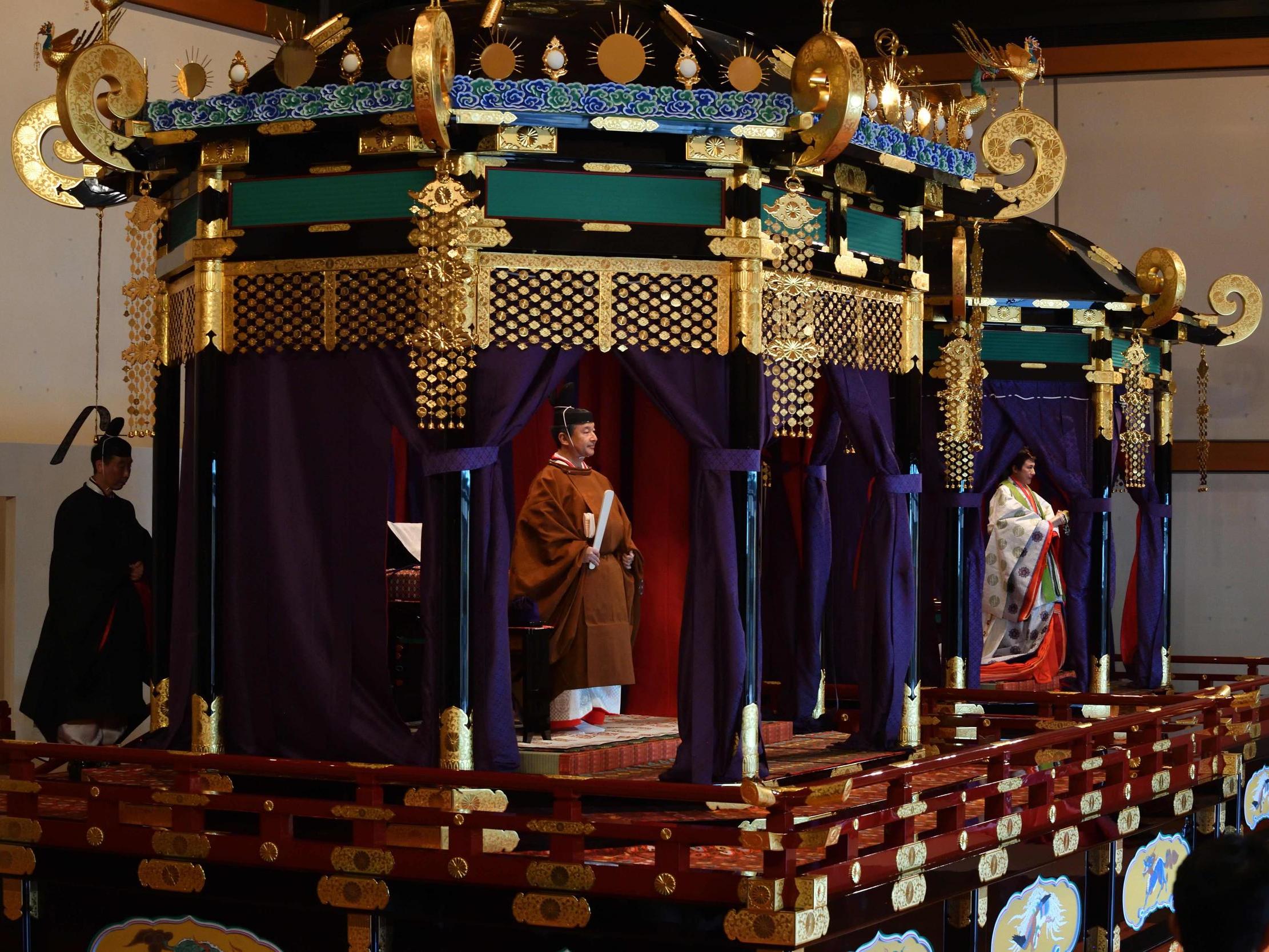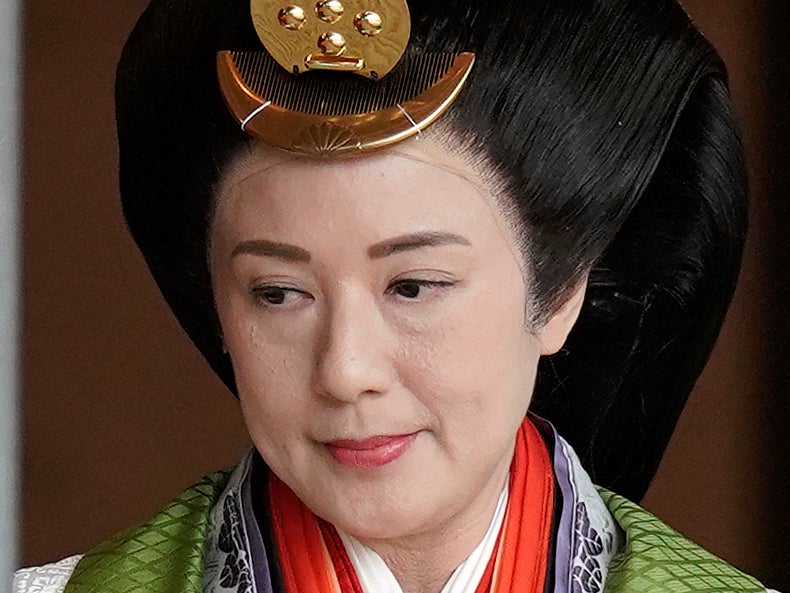Japanese emperor Naruhito ascends throne in ornate ceremony
Celebratory parade postponed after deadly typhoon causes flooding and landslides
Your support helps us to tell the story
From reproductive rights to climate change to Big Tech, The Independent is on the ground when the story is developing. Whether it's investigating the financials of Elon Musk's pro-Trump PAC or producing our latest documentary, 'The A Word', which shines a light on the American women fighting for reproductive rights, we know how important it is to parse out the facts from the messaging.
At such a critical moment in US history, we need reporters on the ground. Your donation allows us to keep sending journalists to speak to both sides of the story.
The Independent is trusted by Americans across the entire political spectrum. And unlike many other quality news outlets, we choose not to lock Americans out of our reporting and analysis with paywalls. We believe quality journalism should be available to everyone, paid for by those who can afford it.
Your support makes all the difference.Japan’s new emperor has formally proclaimed his ascendancy to the country’s Chrysanthemum Throne in an ornate ceremony.
Naruhito, the country’s 126th emperor, appeared on Tuesday before a cheering audience at the Imperial Palace in Tokyo.
“I hereby swear that I will act according to the constitution and fulfil my responsibility as the symbol of the state and of the unity of the people of Japan,” the 59-year-old said.
He pledged to always pray for the happiness of the Japanese people and the peace of the world during a series of ancient rituals.
Naruhito officially began his reign in May 2019, after his father Akihito’s abdication.
The 30-minute enthronement ceremony is the most significant of several succession rituals and was attended by dignitaries from nearly 200 countries.
The new emperor wore a traditional robe and a black headdress for Tuesday’s rituals.
He was hidden from view after stepping into the “Takamikura” – the 6.5m high curtained throne.
At the sound of a bell a pair of attendants opened the octagonal throne’s purple curtains, revealing the new emperor, who stood and publicly declared his succession.
Naruhito’s wife, Empress Masako, was seated beside him on the “michodai”, the traditional empress’ seat.

The Harvard-educated diplomat wore a layered court kimono during the ceremony.
The thrones were transported from Kyoto, Japan’s former capital, where the emperors lived until 150 years ago.
Shinzo Abe, Japan’s prime minister, congratulated Naruhito and led three “banzai” cheers, which traditionally convey hopes for ten thousand years of long life.
Japan postponed the traditional enthronement parade, initially scheduled for Tuesday afternoon, after Typhoon Hagibis caused severe flooding and landslides in the country’s central and northern regions.
The imperial couple hosted a court banquet for 400 dignitaries after the ceremony.
The enthronement ceremony is the second phase of a three step ascendancy process, following the emperor’s formal succession in May.

A Grand Harvest ritual, a religious and divisive set of ceremonies, will be held next month.
Japan has the world’s oldest hereditary monarchy, which is believed to be 1,500 years old.
Naruhito and Masako have been warmly welcomed by the Japanese public, though some have criticised the government’s decision to celebrate the enthronement by granting 2.5m criminals amnesty.
“I think people have high expectations for the emperor who is fluent in foreign language and internationalised,” said Eiichi Miyashiro, a historian and monarchy expert.
Japan bars male heirs from ascending to the throne and the couple’s teenage daughter Princess Aiko is unlikely to ever succeed her father.
Mr Abe and his ultra-conservative supporters insist on male-only succession, while a majority of the general public support female emperors.
Additional reporting by agencies

Join our commenting forum
Join thought-provoking conversations, follow other Independent readers and see their replies
Comments